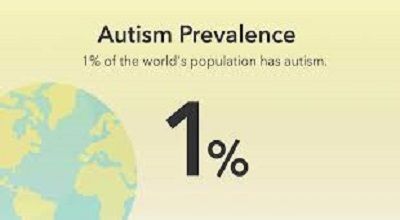Autism Rate in Pakistan
Now here, we are posting the latest Autism Rate in Pakistan. According to the web search results, there is no reliable data available regarding the prevalence of autism spectrum disorder (ASD) in Pakistan. However, the Pakistan Autism Society has estimated that approximately 400,000 children in Pakistan are suffering from ASD. This means that about 0.19% of the total population or 1 in 526 people in Pakistan have ASD.
This is lower than the global average of 1 in 160 people estimated by the World Health Organization. However, this may be due to the lack of awareness, diagnosis, and services for autism in Pakistan. There are only a few child psychiatrists and specialized schools for autism in the country, and many people with autism face stigma and discrimination². Therefore, the actual number of people with autism in Pakistan may be higher than the reported estimate.
How is autism diagnosed?
Autism is diagnosed by a team of professionals who have expertise in assessing and diagnosing autism spectrum disorder (ASD). They may include psychologists, psychiatrists, pediatricians, speech pathologists, occupational therapists, and others. The diagnosis is based on the observation of the child’s behavior, communication, and social skills, as well as the parent’s report of the child’s developmental history and current functioning. The diagnosis also takes into account the impact of the child’s symptoms on their daily life and activities.
There are different tools and frameworks that are used to help diagnose ASD. Some of the most common ones are:
The Diagnostic and Statistical Manual of Mental Disorders, Fifth Edition (DSM-5). Which provides standardized criteria to diagnose ASD. According to the DSM-5, a child must have persistent deficits in each of three areas of social communication and interaction, plus at least two of four types of restricted repetitive behaviors. The DSM-5 also specifies the severity level of ASD based on the level of support needed by the child.
The International Classification of Diseases, 10th Revision (ICD-10). Which is a global standard for diagnosing health conditions. According to the ICD-10, ASD is classified under the category of pervasive developmental disorders (PDD). Which includes autistic disorder, Asperger’s syndrome, childhood disintegrative disorder, and pervasive developmental disorder not otherwise specified (PDD-NOS). The ICD-10 also provides diagnostic criteria for each subtype of PDD based on the presence and severity of impairments in social interaction, communication, and behavior.
The Autism Diagnostic Interview-Revised (ADI-R). Which is a structured interview that is conducted with the parent or caregiver of the child. The ADI-R covers the child’s early development, language and communication, social interaction, play, interests and behaviors, and current functioning. The ADI-R helps to determine whether the child meets the criteria for ASD according to the DSM-5 or the ICD-10.
The Autism Diagnostic Observation Schedule (ADOS). Is a standardized observation tool that is used to assess the child’s social communication and behavior in various settings and situations. The ADOS consists of different modules that are tailored to the child’s age and language level. The ADOS helps to evaluate the child’s social skills, communication skills, imagination, creativity, and repetitive behaviors.
More Read…
The Diagnostic Interview for Social and Communication Disorders (DISCO). Which is a semi-structured interview that is conducted with the parent or caregiver of the child. The DISCO covers the child’s developmental history, current abilities and difficulties, family background, medical history, and educational needs. The DISCO helps to identify the child’s strengths and weaknesses in social communication and interaction, as well as their interests and preferences.
The Developmental, Dimensional and Diagnostic Interview (3Di). Which is a computerized interview that is conducted with the parent or caregiver of the child. The 3Di covers various aspects of the child’s development, behavior, communication, social skills, emotions, and sensory experiences. The 3Di helps to measure the degree of impairment in each domain and to generate a diagnostic profile for ASD.
These tools are not mutually exclusive and can be used together to provide a comprehensive assessment of ASD. However, not all tools are available or accessible in every country or region. Therefore, it is important to consult with a qualified professional who can provide an accurate diagnosis and appropriate support for your child.
